Estimated reading time 10 minutes, 24 seconds.
Mobility is a highly prized commodity for some busy people, both in business and in leisure. If you’re a pilot “on the go,” Piper Aircraft’s M350 pressurized piston-powered single-engine airplane may be a solution.

Aviation Unlimited, Piper’s Canadian sales distributor, brought a brand new demonstrator aircraft, registration C-GBTB, to Ottawa on a sunny autumn day. Isaac Capua and Conrad Hatcher flew the airplane from Aviation Unlimited’s base at Oshawa Airport. As it happened, their arrival for our flight proved a good test of the airplane, as the Ottawa airport was under a blanket of fog. It was encouraging indeed to see, or rather hear, the aircraft complete a tough instrument approach and taxi out of the mist for our meeting.
The M350 is the latest development of what was originally Piper’s popular PA-46 Malibu; a design introduced in 1983 which ushered in the age of the cabin-class single. The original Continental engine-powered, 310 horsepower (HP) Malibu suffered a number of high-profile engine failures, so Piper rebooted the design with the 350 HP Lycoming-powered Mirage in 1989. The concept for the turboprop-powered Meridian was introduced in 1997, featuring a 500 HP Pratt & Whitney Canada PT6A-42A turboprop engine.
In recent years, Piper has invested heavily in its M-Class models, which include the M500 and M600 turboprops, developed from the Meridian, and the M350 piston derivative of the Mirage. The M350 was introduced in 2015, certified as the PA-46-350P, and powered by a dual-turbocharged, fuel-injected 350 HP Lycoming TIO-540-AE2A engine driving a three-blade Hartzell constant speed propeller. The Matrix is the unpressurized version of the M350.
Meet the M-Class
I was pleasantly surprised by the fit and finish of the airplane, perhaps having been biased by so many forlorn old Piper trainers that I’ve seen parked behind flying clubs. Not so the M350, which looked solid and robust. To my eye, it was swoopy and attractive on the ramp; not a trivial impression for what is almost entirely an owner-flown design.
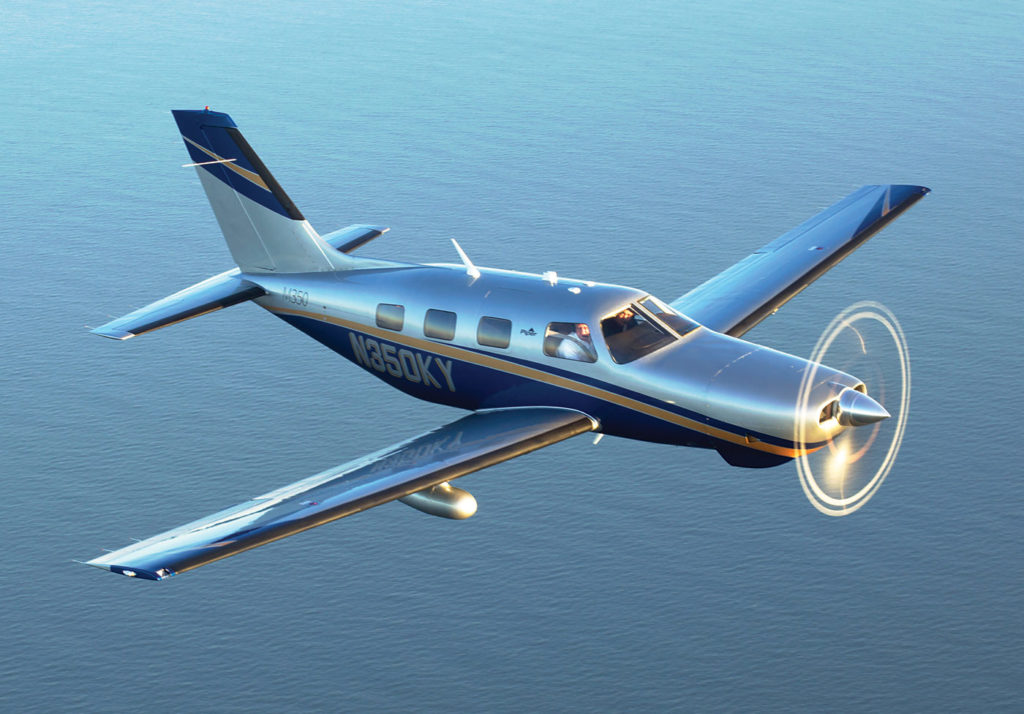
The pre-flight inspection revealed an airplane that was thoroughly modern and well-conceived. The exterior lights are all light emitting diodes (LED) for improved service life. A small storage compartment in the under-wing radome and another in the tail provide convenient externally-accessible storage for light items. Capua extolled the merits of the M350’s optional pneumatic deicing system over competing fluid-based systems.
Cabin access is quite dignified for a light airplane, with entry via a two-part clamshell door and stairs. I settled into the left seat. Hatcher was my adult supervision in the right seat. The cockpit seats were thoroughly adjustable, and after some fiddling I found it quite comfortable. The headroom was the only disappointment–even for my quite average 5’9″ frame, my headset just touched the cabin roof. Hatcher mentioned that a seat modification kit is available to allow up to three more inches of headroom, if one desires. I would.
Our demonstrator aircraft had a basic empty weight of 3,150 pounds, which, thanks to its generous optional equipment, was 100 pounds over the published standard equipped weight. Adding two pilots, one human and some gear brought the zero fuel weight to 3,730 pounds. The fuel gauges indicated 76 gallons, or about two-thirds fuel quantity, bringing the gross takeoff weight to 4,186 pounds. That left us 154 pounds below the maximum takeoff weight of 4,340 pounds.

Clearly you cannot fill the seats and fill the tanks, but with a published maximum range of 1,343 nautical miles (plus reserve), the 720 pound (120 US gallon) maximum fuel load provides considerable flexibility to trade range for payload.
“Where to, boys?”
We obtained a clearance for a round-robin flight to Kingston, Ont. The start procedure was straightforward for a fuel-injected engine. Nosewheel steering was a bit stiff, with light centering forces, but I quickly made friends with it.
The earlier fog had cleared, and we departed Ottawa’s Runway 07 under a clear blue sky with light winds. Normal takeoffs are performed with 10 degrees of flaps, using a rotation speed of 85 knots indicated airspeed (KIAS). Engaging the Coupled Go-Around feature on the ground preset the flight director for a wings-level, seven degree pitch attitude. Assuming maximum takeoff weight, the published takeoff distance over a 50-foot obstacle was a respectable 2,090 feet.
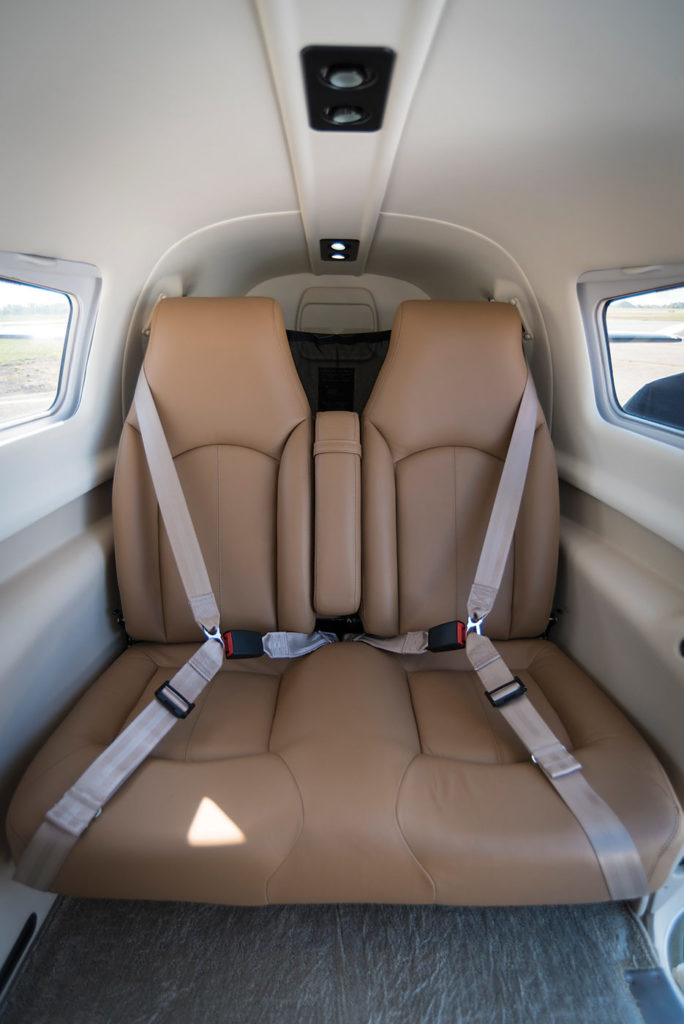
Hatcher recommended a 120 KIAS cruise-climb airspeed, which resulted in just over a 1,000 feet per minute rate of climb. Thanks to the turbocharger, one can expect the M350 to maintain its climb performance to nearly cruise altitude.
Comfortable cruiser
We levelled off at 14,000 feet under ISA+12 degree Celsius conditions and set High Speed Cruise power: 32.0 inches manifold pressure; 2,470 RPM; with the mixture leaned to 1,560F turbine inlet temperature. The result was 190 knots true airspeed (KTAS) sipping 24.1 gallons per hour fuel flow.
Piper quotes a maximum cruising speed of 213 KTAS, but that would occur at the airplane’s 25,000 foot certified ceiling. Hatcher described “the mid-teens” as good cruising altitudes for the M350.
I mused that it was a pleasant novelty to be so high in a piston single-engine airplane with a cabin altitude of only 1,620 feet, owing to the 5.5 pounds per square inch maximum cabin pressure differential. If that appeals, then your airplane search narrows to the M350, since it’s the only pressurized piston-engine aircraft currently in production.

Hatcher agreed, offering that buyers are often attracted to the pressurization for their passengers’ comfort, as it affords higher, smoother cruise altitudes without need of an oxygen mask. “It trumps the parachute,” Capua added, in reference to the ballistic recovery chute in the competing Cirrus. The M350 can maintain sea level cabin pressure to 12,000 feet.
The cockpit environment in cruise left little to be desired. Owing to the pressurization, air conditioning is standard equipment. Heating and ventilation seemed quite adequate. Under my noise cancelling headset, the big Lycoming purred contentedly. With Garmin’s GFC 700 autopilot smoothly doing the steering, I idly poked my finger into the pulse oximeter on the instrument panel, and was rewarded with the knowledge that I had 98 per cent blood oxygen saturation. Oh, I apparently also had a pulse of 69 beats per minute. Reassuring.
In the event that I wasn’t adequately pressurized with oxygen, a hypoxia recognition system would detect the absence of pilot interaction with the avionics and commence an automated descent to a safer altitude.
The now nearly ubiquitous Garmin G1000 avionics suite includes dual 10.4-inch primary flight displays and one 12.1-inch multifunction display–and a whole lot of capability. Standard equipment in the M350 includes synthetic vision and a yaw damper. I took a stab at loading the RNAV RWY 19 instrument approach in Kingston, stumbling slightly due to my unfamiliarity. Hatcher, coming to my rescue, noted that computer-savvy pilots seem to expect to understand the complex G1000 immediately, musing that, “If you recall fixed-card ADF approaches, I’m surprised that pilots expect to master the G1000 in an hour.” Fair enough.
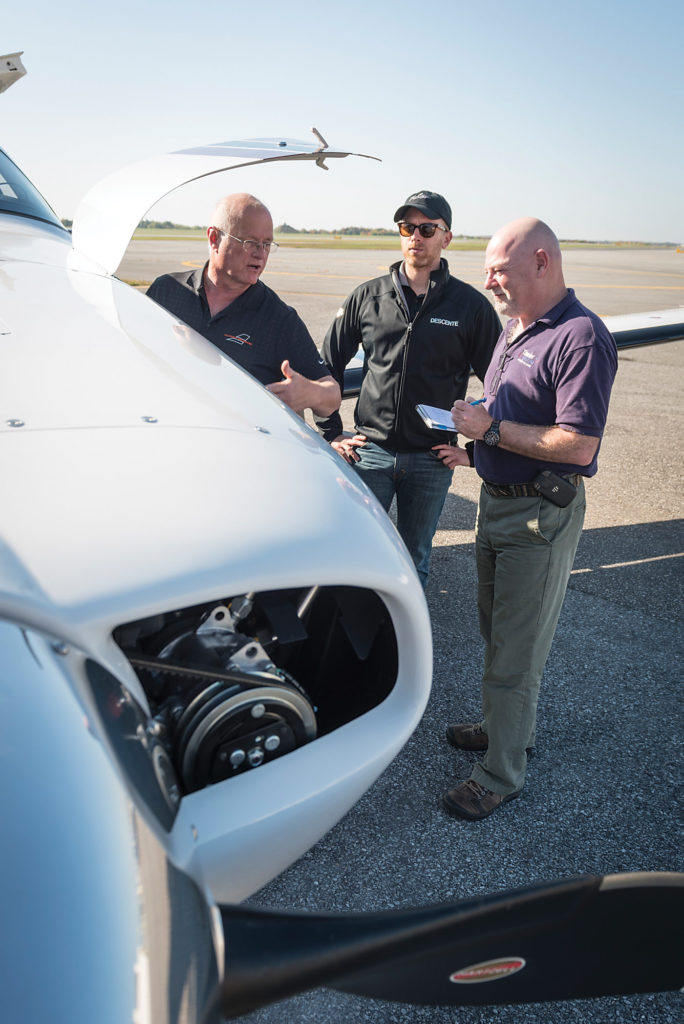
From there, the avionics simply steered us through the procedure and delivered us at the missed approach point. I just monitored our progress through the synthetic vision system, and was left to manage configuration and power.
Commencing the missed approach is typically a high-workload moment requiring disengagement of the autopilot, but the M350’s Coupled Go-Around Mode made it push-button simple. In concert with the Underspeed Protection System, the autopilot remains engaged and protects against excessively low speed while the pilot applies power and cleans up the flaps and undercarriage.
Handling, approach and landing
En route back to Ottawa, I took the opportunity to sample the M350’s handling qualities. Autopilot disengagements were smooth, typically leaving the airplane in trim. The controls were pleasant, responsive and tight, and would present no undue challenges for a minimally experienced pilot. I found configuration changes transparent, requiring only small trim corrections. Having extended the undercarriage and full flaps, I sampled a few very benign stalls. At our operating weight, the low-speed audio warning activated at 63 KIAS, with only a small and easily corrected left wing drop at 59 KIAS.
The Electronic Stability Protection system provides additional flight envelope protection from roll upsets while hand-flying by automatically engaging servos to input corrective forces should the pilot encroach upon safe limits.
A further neat Garmin innovation is the big, blue “LVL” (level) button on the instrument panel, which serves as a sort of panic button to quickly return the aircraft to a wings-level attitude with zero vertical speed.
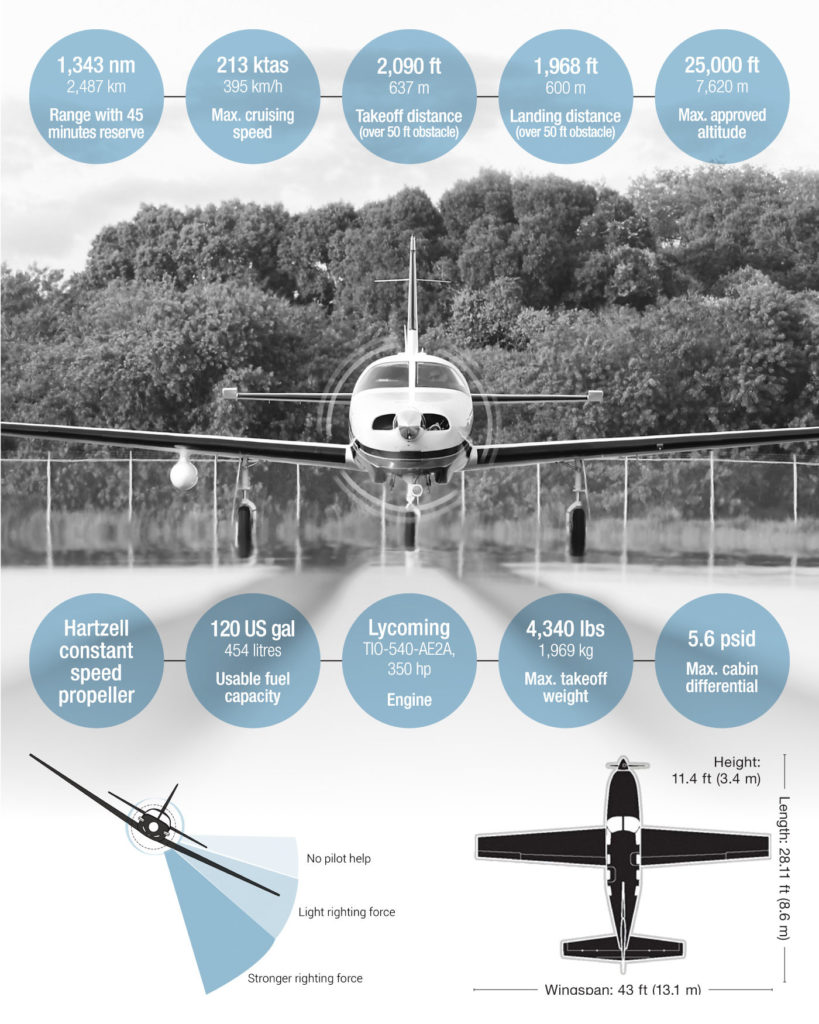
Aircraft owner-pilots rarely fly as much as they would like, and maintaining proficiency is often a challenge. The comprehensive safety features in the M350 go a long way to matching the aircraft to its target demographic. If my opinion on these safety features isn’t clear: “Yay, Piper!”
Returning to Ottawa it was quickly time for descent, which is usually a limitation of turbocharged aircraft, as power reductions need to be performed very slowly to avoid shock-cooling the expensive parts. I was pleased to see that the M350 could achieve better than a 2,000 foot-per-minute rate of descent without reducing power, thanks to the combination of wing-mounted speed brakes and the relatively high maximum airspeed (Vne) of 198 KIAS. Likewise, the generous undercarriage and approach flap (10 degrees) extension speed of 165 KIAS help the M350 to slow down when the airport appears.
Far too soon we were landing back on Ottawa’s Runway 07, using full flaps and an approach speed (Vref) of 85 KIAS. Turning onto the taxiway, I noticed that I was smiling. That’s the best endorsement that I can imagine for an owner-flown airplane design.
The envelope, please
It is heartening to report that there are once again a number of single-engine airplanes on the market. Options include four- to six-place designs, piston and turboprop models, high- and low-wings, with fixed and retractable undercarriage.
The market hasn’t been so well served since the 1980s, although today’s airplanes are far better in every regard. Piper’s new M350 fares well against the competition, occupying its unique niche as the only pressurized six-place single-engine piston aircraft.
The M350 is a light airplane, but it’s also a serious travelling machine. Armed with the G1000’s impressive capabilities, weather radar and certification for flight into known icing, the result is a virtually “go anywhere any time” airplane for pilots on the go. Mobility problem solved.
Robert Erdos is a contributing editor for Skies magazine. He is a graduate of the U.S. Naval Test Pilot School and a professional test pilot. Also an aviation enthusiast, his spare time activities include displaying vintage airplanes and flying his RV-6 kitplane.
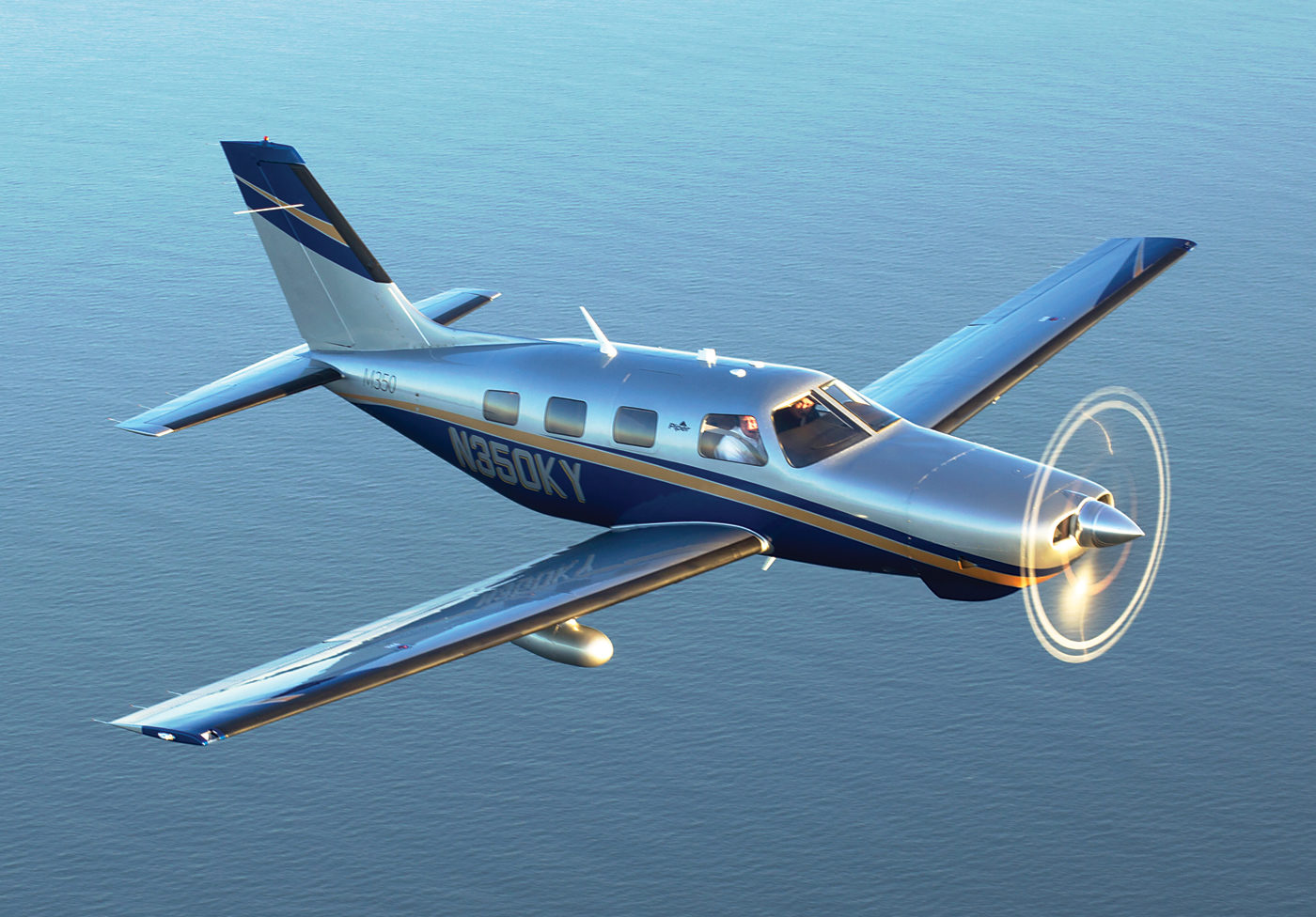

With the m350 6 seat w/ 350 hp, you still can’t fill all 6 seats w/ full fuel, how many seats could you fill w/ the Malibu at 310 hp, full fuel, At what point do you stop calling it a 6 seat airplane?
Should it just be understood when using all 6 seats you’re going to have to sacrafice and reduce fuel, It seems w. 6 seats at an average of 150lbs. thats 900 lbs. of your payload, leaving only 400lbs. of fuel, at 6lbs each thats only 66 gallons or approx. 1/2 tanks, or around 2.8 hours w/ 1/2 hour reserve. And do you want to operate the plane at full useful/payload, Is it sluggish on takeoff and climb out? What rate of climb would be expected at full useful load,
Exactly my thoughts lol…. Make it a four seater and call it done.
Why call it a 4 seat plane?? What about a family of 6? Fill ‘er up with fuel and family no problem. For all adults, it is simply a 6 seat airplane for shorter flights, and a <6 seater for longer flights. What's so hard to understand about that? Do you want to call a C-172 a 2 or 3 seat airplane simply because it can't hold full fuel and 4 passengers? No, you simply know that you can only use all the seats for a short flight, unless it's kids in the back seats.
A King Air 250 full of fuel can legally haul a 155 lb. pilot. That’s it!